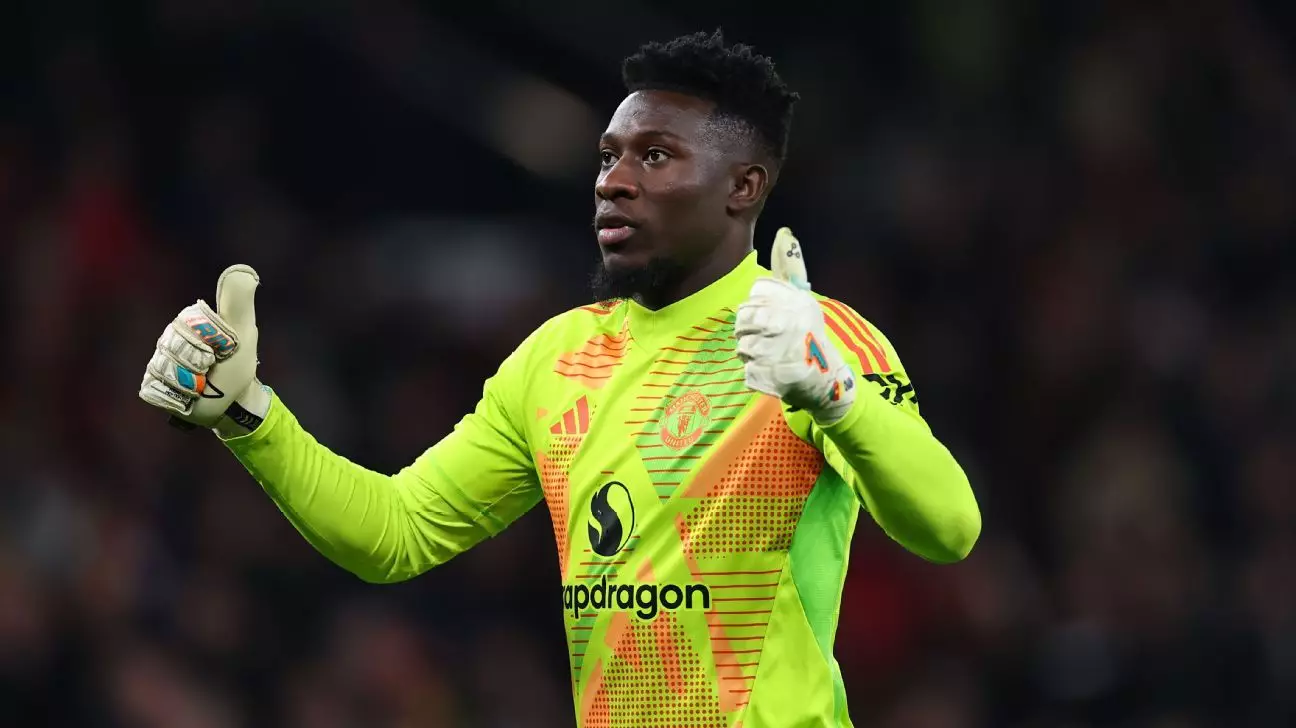As Manchester United prepares to usher in a new era under the stewardship of Rúben Amorim, the atmosphere around Old Trafford is charged with both anticipation and uncertainty. Set to officially take charge on November 11, Amorim’s transition from Sporting CP to Manchester United represents a significant tactical shift for the club. Historically aligned with a 4-3-3 formation, the team will now pivot to Amorim’s preferred 3-4-3 system. The implications of this change are profound, as they necessitate a reevaluation of player roles, positional responsibilities, and overall team dynamics.
André Onana, the club’s goalkeeper, has publicly expressed confidence in the squad’s ability to embrace this new tactical approach. Speaking at a news conference, he emphasized the adaptability and pragmatism of his teammates, stating, “Everyone here is capable of doing it.” Such statements are essential for fostering a positive mindset, yet they also highlight the underlying challenges that come with a significant system overhaul.
Amorim’s tactical preference is characterized by a reliance on a three-man defense, which inherently shifts the onus onto players to exhibit versatility. Unlike the traditional midfield setup seen in a 4-3-3, a 3-4-3 typically demands that midfielders push further forward and that wing-backs contribute significantly to both defense and attack. This requires not just individual skill but also a cohesive understanding of how to execute complex movements as a unit on the pitch.
Questions loom over whether the current squad members can seamlessly transition into this demanding structure. The existing players may be adept in a 4-3-3 environment, yet adapting to unfamiliar positional responsibilities under the new formation could disrupt the team’s chemistry. For United to thrive, the players must rapidly acclimate to Amorim’s demands, which is no small feat considering the intricacies involved in such a tactical shift.
While focus is rightly placed on the tactical changes ahead, the situation leads to inquiries about Ruud van Nistelrooy’s position within the club. With no formal communication with Amorim yet, the Dutchman seems to be in limbo regarding his future role. Assuming responsibility in the interim, Van Nistelrooy has stated his focus remains on the short-term goal of securing favorable results in upcoming matches. However, the uncertainty surrounding his future raises pertinent questions about the dynamics of coaching staff in a high-profile club like Manchester United.
One could argue that decision-making at this level often leads to a power struggle between the ambition of the incoming coach and the legacy of those previously in position. Harmonious relationships between coaching staff are critical for a successful transition, and how well van Nistelrooy and Amorim establish rapport will heavily influence the future trajectory of the squad.
In terms of player wellness, the return of Leny Yoro to team training provides a glimmer of hope for Manchester United. Yoro, who has endured a challenging recovery from a broken foot, represents not just a physical bolster for the backline but also a psychological lift for the team as they face challenging fixtures ahead. The balance of managing injuries while simultaneously implementing a new tactical framework is no easy task, yet it underscores the crucial interplay between player health and team performance.
Van Nistelrooy has acknowledged the importance of Yoro’s return, adding, “It’s a big moment for him, that first time he is back in team training.” As other key players like Luke Shaw and Harry Maguire remain sidelined, the need for squad depth and tactical flexibility becomes increasingly apparent.
Manchester United stands at a crossroads as they prepare for Rúben Amorim’s leadership. With a clear need for tactical adaptation, substantial adjustments will be necessary both on and off the field. While Onana’s confident assertions instill a sense of optimism, the realities of implementing a new playing philosophy amid ongoing uncertainties present formidable challenges. It will take time, collective effort, and strong leadership to navigate the transition effectively. As the stakes continue to rise, only time will tell how well this historic club can adapt and thrive in the face of change.

